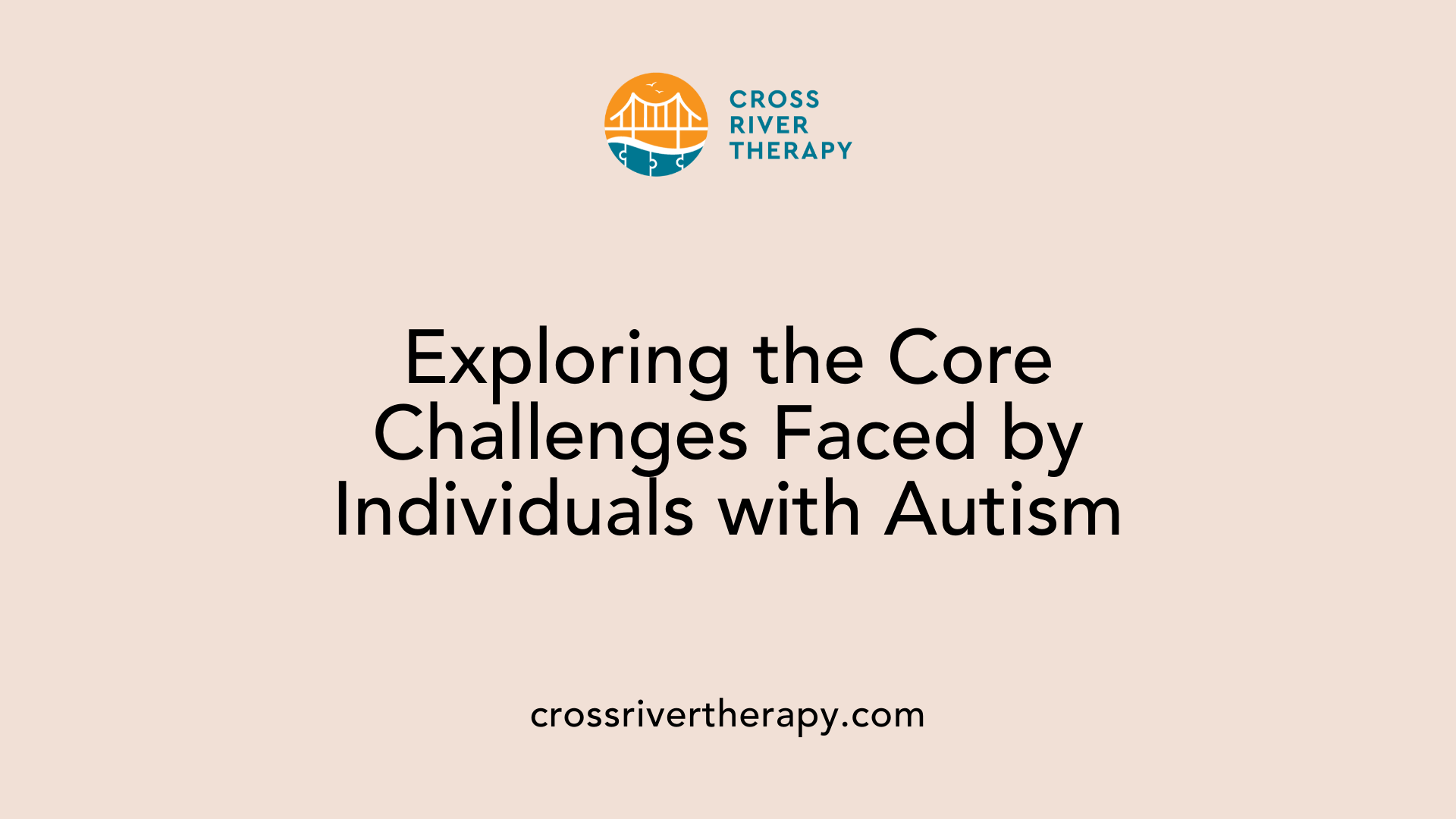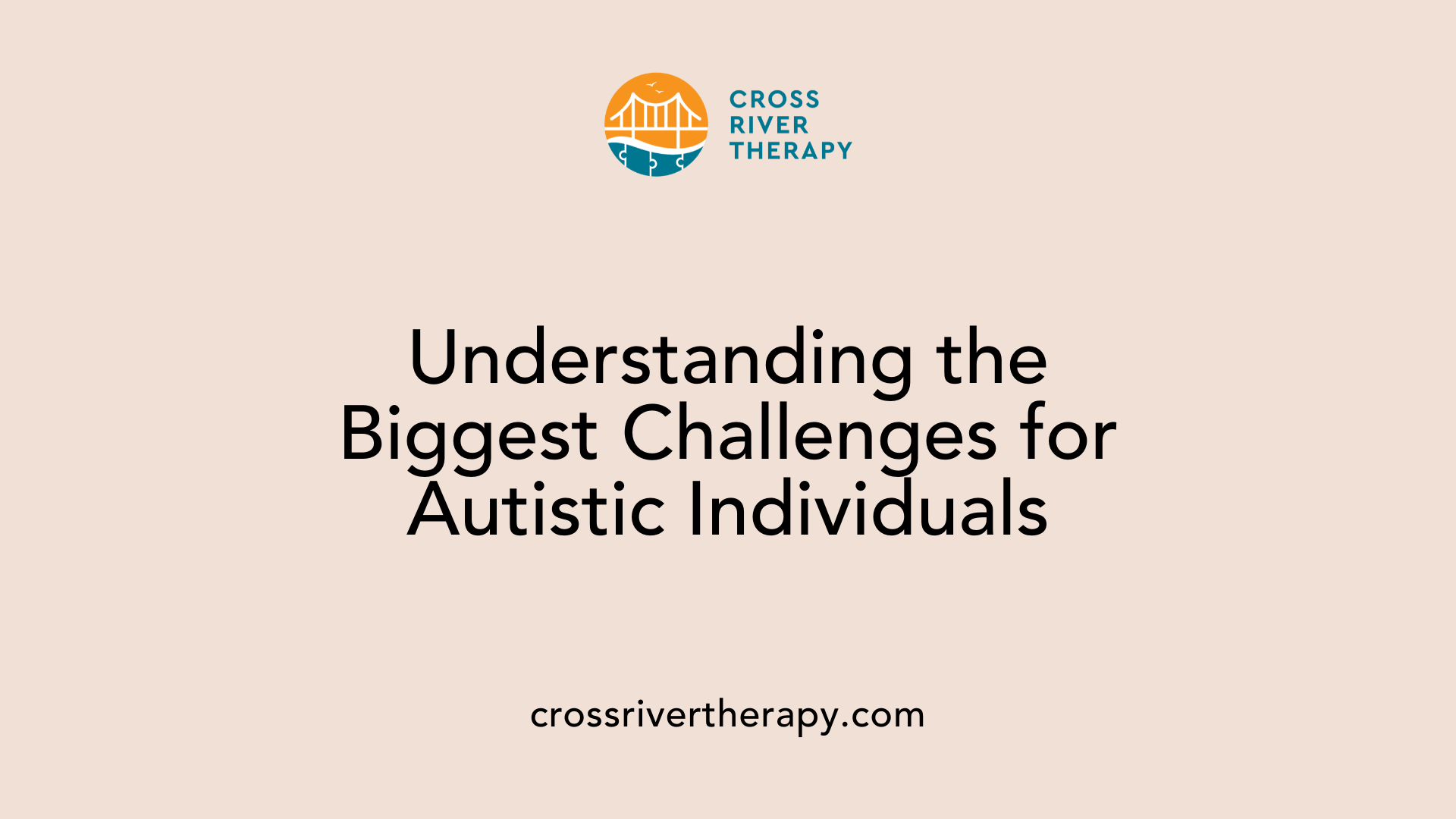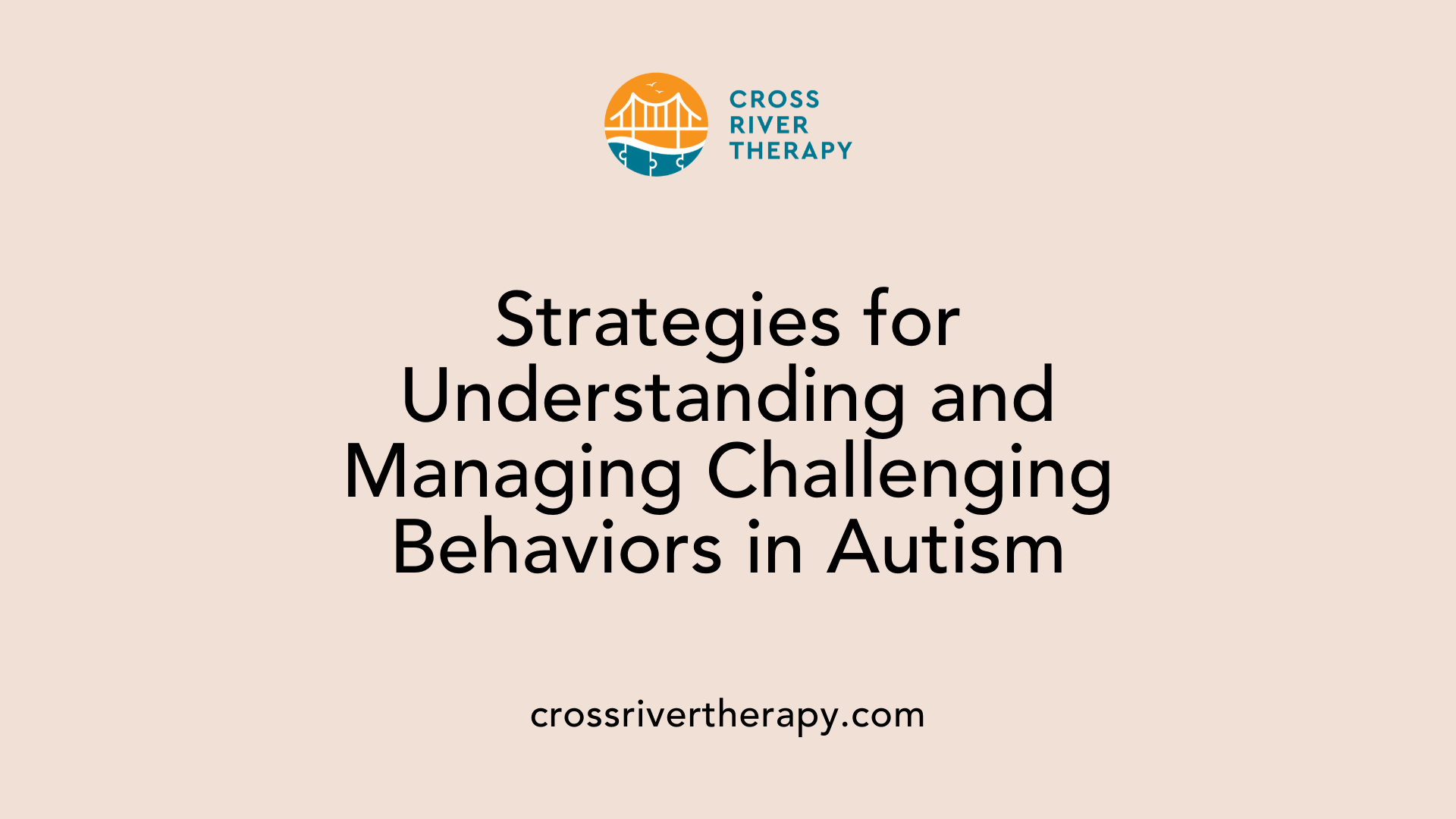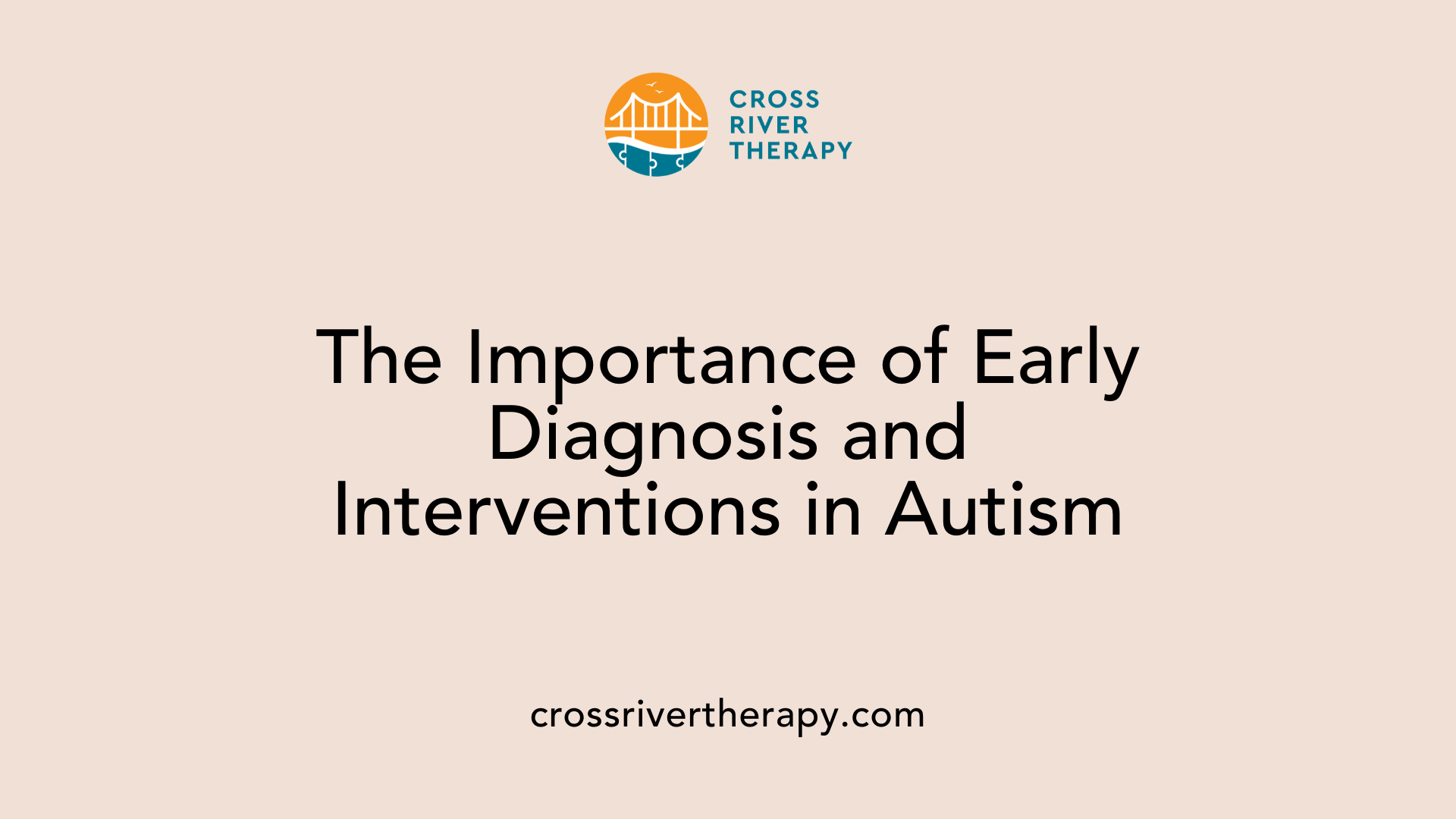Understanding Autism Challenges
Exploring the Complex Challenges of Autism Spectrum Disorder
Introduction to Autism and Its Challenges
Autism Spectrum Disorder (ASD) is a complex neurodevelopmental condition that presents a variety of challenges for individuals throughout their lives. Understanding the intricacies of these challenges is essential for improving support systems and fostering an inclusive environment for autistic individuals. This narrative delves into the core challenges of autism, as well as societal impacts and effective strategies that can help autistic individuals navigate their environments effectively.
Core Challenges of Autism

What are the core challenges of autism?
The core challenges faced by individuals with autism spectrum disorder (ASD) encompass a range of difficulties that significantly impact their daily lives.
Social Communication Difficulties:
- Individuals often struggle to interpret nonverbal cues such as facial expressions and body language. This challenge can hinder effective interaction, making it hard for them to maintain conversations.
- Many autistic individuals also face issues with initiating social interactions, which may lead to isolation or misunderstanding in social settings.
Restricted and Repetitive Behaviors:
- Commonly observed behaviors include insistence on routines, repetitive movements (like hand flapping), and intense focus on specific interests. These behaviors often serve as coping mechanisms to manage anxiety or sensory overload.
- Such rigidity can complicate interactions with peers, limiting opportunities for social engagement.
Sensory Sensitivities:
- About 96% of children with ASD exhibit sensory sensitivities, experiencing either hypersensitivity (over-responsiveness) or hyposensitivity (under-responsiveness) to sensory inputs.
- This can result in overwhelming reactions to everyday environments, causing significant anxiety or distress.
Executive Functioning Challenges:
- Difficulties in planning, organization, and impulse control are common. Such executive functioning challenges impact the ability to manage daily tasks effectively, from household chores to time management.
Co-occurring Conditions:
- Many individuals with ASD experience additional mental health issues, such as anxiety and depression, affecting their overall quality of life and complicating treatment strategies.
Understanding these core challenges is crucial for developing tailored support systems conducive to enhancing the quality of life for individuals with autism.
The Greatest Challenges Faced by Individuals with Autism

What is the biggest challenge for people with autism?
The biggest challenge for people with autism encompasses a range of interconnected issues. Negative attitudes from non-autistic individuals can have a profound effect on their mental health. Studies show that around 80% of autistic individuals experience anxiety, depression, or higher suicide rates throughout their lives.
Societal Attitudes
Preconceived notions about autism can lead to damaging stereotypes and misunderstandings, contributing to social isolation and bullying. Acceptance and understanding from society are crucial in fostering a supportive environment for autistic individuals.
Employment Barriers
Employment opportunities remain limited. Statistics indicate only about 30% of autistic individuals are employed, despite 75% expressing a desire to work. Barriers often arise due to the emphasis on social skills in job requirements and outdated interview practices.
Sensory Sensitivities
Sensory sensitivities make daily life particularly challenging. Many individuals with autism experience heightened sensitivity to noises, lights, and textures, which can result in overwhelming distress in public spaces.
Mental Health Issues
Additionally, mental health complexities are prevalent, often exacerbated by prior negative interactions. Many autistic individuals contend with alexithymia, making it difficult to identify and communicate their emotions clearly.
Need for Routine and Structure
Finally, most individuals thrive on structure and routine. Disruptions can provoke anxiety and lead to significant behavioral challenges, highlighting the need for consistent environments tailored to their unique needs.
| Challenges | Description | Impact on Individuals |
|---|---|---|
| Societal Attitudes | Stigma and negative perceptions | Social isolation, bullying |
| Employment Barriers | Low employment rates and hiring biases | Financial instability, reduced opportunities |
| Sensory Sensitivities | Overwhelm from environmental stimuli | Anxiety, meltdowns |
| Mental Health Issues | High prevalence of anxiety and depression | Compromised wellbeing, increased distress |
| Need for Routine and Structure | Resistance to changes in routine | Heightened stress and anxiety |
Understanding and Managing Challenging Behaviors

What are the challenging behaviors in autism?
Challenging behaviors in autism often include physical aggression such as hitting, kicking, and biting, experienced by over 50% of children and teens with autism. Hyperactivity, anxiety, and self-injurious actions—like hitting oneself—are also significant concerns, often linked to sleep difficulties and communication barriers. These behaviors can be distressing not only for the individual but also for their families and caregivers.
Management strategies
Effectively addressing these behaviors typically involves a multi-faceted approach:
- Medications: Prescriptions like Risperidone and Aripiprazole may help manage aggression and anxiety.
- Behavioral Therapies: Applied Behavioral Analysis (ABA) emphasizes positive reinforcement to encourage desired behaviors and diminish negative ones.
- Counseling: Therapeutic support can help families navigate challenging behaviors.
Using positive behavior support strategies, caregivers can foster their child’s well-being while improving the overall family dynamic.
Resources for families
Many resources are available to assist families in managing challenging behaviors, including:
- Challenging Behaviors Tool Kit: Offers step-by-step strategies for supporting autistic individuals.
- Challenging Behaviors Roadmap for Families: Guides families in understanding behavioral challenges and effective responses.
Communication as a key factor
Communication plays a crucial role in decoding challenging behaviors. Many autistic individuals struggle with expressing their needs and emotions, which can lead to frustration and acting out. Clear communication and tailored support—like visual aids or sign language—can help bridge these gaps, leading to reduced anxiety and improved interactions.
Impact on Social Interaction Skills
How does autism impact social interaction skills?
Autism Spectrum Disorder (ASD) profoundly affects social interaction abilities. Individuals often encounter various hurdles in both verbal and nonverbal communication. Eye contact can be challenging, and many find it difficult to interpret the nuances of social cues such as facial expressions and gestures. This leads to struggles in forming and maintaining friendships, making socialization daunting.
Friendship and relationship challenges
Building relationships can feel like walking through a maze for many with ASD. Difficulties with initiating conversations or understanding social norms often result in misunderstandings. Consequently, individuals might find themselves excluded from social groups or feeling isolated. The nuanced nature of friendship and emotional connection can be hard to grasp, leading to strained interactions.
Risk of social isolation and bullying
The ramifications of these social interaction challenges are significant. Individuals with autism frequently experience social isolation and bullying. Misunderstandings about their behavior can lead peers to perceive them as different or unapproachable. This negative treatment often exacerbates feelings of loneliness, further complicating their social landscape and mental well-being.
Early intervention importance
Early intervention is paramount. Strategies such as speech therapy and social skills training can empower individuals with ASD to enhance their communication and interaction capabilities. These interventions are essential for fostering meaningful relationships and mitigating feelings of isolation, ultimately improving their social experience. Through targeted support and understanding, individuals with autism can navigate the complexities of social interactions more effectively.
The Intersection of Autism and Mental Health
Prevalence of Mental Health Issues
Approximately 80% of individuals on the autism spectrum face mental health challenges, including anxiety and depression. This high prevalence underscores the significant emotional and psychological burdens many autistic individuals endure throughout their lives. As autism affects social skills and communication, these inherent difficulties often contribute to increased levels of mental distress.
Impact of Societal Stigma
Negative societal attitudes towards autism exacerbate mental health challenges. Stigmas surrounding autism can lead to social isolation, bullying, and systemic barriers in employment and education, further intensifying feelings of anxiety and depression. Autistic individuals may internalize these attitudes, contributing to a pervasive sense of unworthiness and discouragement.
Importance of Mental Health Support
Providing personalized mental health support is crucial for improving the quality of life for autistic individuals. Early and targeted interventions can aid in addressing co-occurring conditions and foster resilience, enhancing their ability to cope with daily challenges. Advocacy for greater acceptance and understanding of autism by society also plays a foundational role in reducing stigma and promoting mental well-being.
Employment Challenges and Opportunities

Employment rates and barriers
Only about 30% of autistic individuals in the UK are employed, despite approximately 75% expressing a desire to work. This discrepancy highlights significant barriers that many face in the employment landscape. Typical hiring practices often prioritize social skills and conventional interview techniques, leaving individuals with autism at a disadvantage. These practices can overshadow the skills and contributions that autistic individuals can bring to the workforce.
Desire for employment among autistic individuals
The aspiration for meaningful work is strong among autistic individuals. Many express a longing for opportunities where they can thrive and showcase their unique strengths, such as attention to detail, strong problem-solving skills, and specific talents in areas like mathematics or art. However, societal misconceptions and biases can hinder their chances of achieving employment.
Strategies for improving employment prospects
To improve employment prospects for individuals with autism, several strategies can be implemented:
- Tailored Work Programs: Developing internship and training programs designed specifically for autistic individuals can help bridge the gap into regular employment.
- Inclusive Interview Processes: Employers should adapt their interview processes to accommodate neurodiverse candidates, focusing on skills rather than solely on social interaction.
- Supportive Work Environments: Creating autism-friendly workplaces with sensory-friendly designs can foster productivity and retention for autistic employees.
By addressing these barriers proactively, society can unlock the potential of autistic individuals in the workforce.
Early Diagnosis and Interventions: A Crucial Step Forward

Benefits of Early Diagnosis
Early diagnosis of Autism Spectrum Disorder (ASD) is vital for enabling timely intervention, which significantly improves long-term developmental outcomes. By recognizing the signs of autism early, families can access support that is tailored to their child's specific needs, helping to foster improved communication, social skills, and behavior management.
Effective Intervention Strategies
Various intervention strategies can be pursued to support children diagnosed with autism. Applied Behavior Analysis (ABA) is widely recognized for its effectiveness in addressing behaviors by reinforcing positive actions while reducing challenging ones. Additionally, speech therapy is essential for enhancing communication skills, enabling better interaction with peers and family.
Therapies That Enhance Development
Occupational Therapy (OT) is another important approach, focusing on daily living skills and sensory processing challenges. Tailored OT can improve skills necessary for self-care and social interaction. Early Start Denver Model is also a noteworthy program that combines play therapy and one-on-one instruction, yielding promising results in fostering communication and social skills in young children with autism.
| Therapy Type | Focus Area | Key Benefits |
|---|---|---|
| Applied Behavior Analysis (ABA) | Behavior modification | Helps in reinforcing desired behaviors |
| Speech Therapy | Communication skills | Improves both expressive and receptive language abilities |
| Occupational Therapy (OT) | Daily living and sensory skills | Enhances self-care and coping with sensory sensitivities |
| Early Start Denver Model | Comprehensive developmental support | Fosters overall growth through play-based strategies |
Strengths and Abilities of Autistic Individuals
Recognizing and nurturing strengths
Autistic individuals often exhibit unique strengths alongside their challenges. Some commonly recognized abilities include exceptional memory, artistic talent, and mathematical aptitude. It is crucial to identify these strengths early and nurture them, as this can significantly enhance self-esteem and provide a foundation for future success in various fields.
Overcoming barriers to development
Despite their abilities, many autistic individuals face barriers that hinder their development. These can include rigid interests that oversimplify their potential, communication challenges, and the lack of understanding from educators or peers. Providing tailored education and support can help bridge these gaps, fostering an environment where their strengths can flourish. Collaborations between families, educators, and therapists are especially beneficial.
Impacts of fostering positive self-identity
Fostering a positive self-identity in autistic individuals is vital. When individuals recognize and appreciate their own strengths, it enhances their psychological well-being and ability to connect with others. Programs that highlight their talents and provide supportive networks can lead to more fulfilling social interactions and greater acceptance in society.
| Strengths | Challenges to Nurturing | Impacts of Positive Identity |
|---|---|---|
| Exceptional memory | Rigid interests | Improved mental health |
| Artistic talent | Communication difficulties | Enhanced social connections |
| Mathematical aptitude | Teacher misunderstandings | Greater confidence in abilities |
Fostering Understanding and Acceptance
As we enhance our understanding of Autism Spectrum Disorder and the challenges it poses, it becomes increasingly vital to adopt supportive strategies that accommodate the unique needs of autistic individuals. Advocacy for neurodiversity, proactive early interventions, and a shift in societal perceptions can significantly improve the quality of life for those affected by autism. By placing emphasis on both the strengths and challenges of autistic individuals, we can create a more inclusive world where everyone has the opportunity to thrive.
References
- Challenging Behaviors - Kennedy Krieger Institute
- Social difficulties in autism spectrum disorder | KU SOE
- Challenges autistic people face | Autistica
- What is autism - National Autistic Society
- Understanding strengths and challenges of people with autism
- Just because you can't see our autism, doesn't mean we don't have ...
- Understanding Autism Challenges - Cross River Therapy
- Understanding Autism and Communication Difficulties in Adults
- What Are The Five Core Challenges In Autism?



